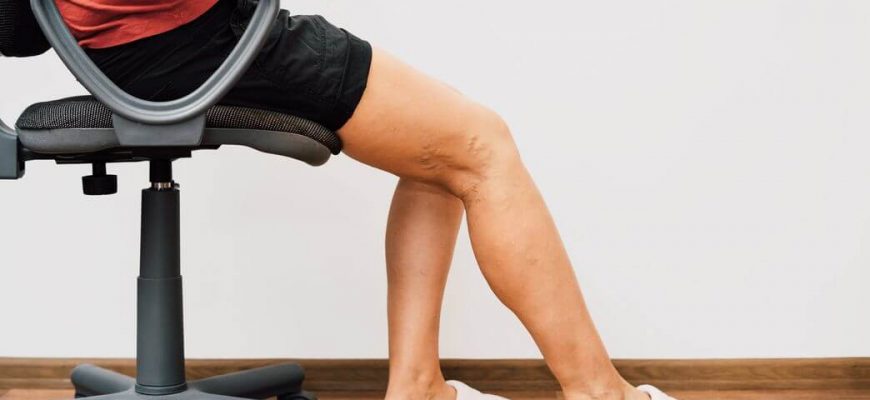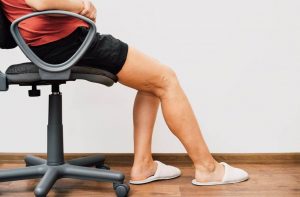
Get assistance with deep vein thrombosis or blood clots in the leg/other areas of the body. Aid is here!
When you hear the words “blood clot,” you may immediately be filled with fear. But, in actuality, a pulmonary embolism or blood clot in a vein serves a greater purpose in the medical field than most realize. In fact, blood clots can be very helpful when it comes to accidental bleeding such as scrapes or cuts with a razor.

If your leg stops bleedings after a razor, a nick or the bleeding on a grazed knee stops soon after a fall from your bicycle, that means that your blood clotting mechanism is working perfectly. Sometimes, however, the blood doesn’t clot the way it should. This can lead to dangerous situations and can sometimes prove fatal if a vein becomes blocked.
What is a Blood Clot
In order to reduce the risk factors and keep you safe from potentially life-threatening health issues in each and every vein such as thrombosis, it is important to understand how and why blood clots can form as well as know the warning signs and how to treat blood clots effectively.
Blood clots can form in different parts of the body. In most cases, they can be found in the circulatory system (your veins). This can actually be quite dangerous as the clots can travel from any part of your body to another quite quickly. If a blood clot reaches a certain part of your body, such as your heart or brain, the results could be fatal, and you should talk to your doctor as a precautionary measure for potential treatment or even surgery to combat any blood-clotting disorders.
If a blood clot does not disperse after forming (to stop you from bleeding profusely), the clot can travel from the origin site to a different location. Some people may have blood clots form in their legs due to a lack of regular movement. Many pregnant women who require a c-section for the birth of their baby may be put on special medication to help reduce the risk of blood clots. Special socks, known as compression socks, are also placed on the legs from the ankles to the knees to keep the blood vessels working as they should. Treating blood clots is vital, and so a visit to the hospital is key to reduce blood pressure and the risk of a heart attack.
Common places that blood clots may form include:
- Legs
- Arms
- Heart
- Lungs
- Brain
- Abdomen
There are symptoms of a blood clot to look for that can keep you from allowing them to develop and block the flow of oxygen through your vessels for too long. Knowing the warning signs and symptoms could save your life!
Blood Clot Symptoms and Warning Signs
Not all blood clots are considered life-threatening as they can be treated quite effectively with modern medicine. Knowing the warning signs and symptoms of a blood clot can help you, and your doctor, determine the best next course of action to take to get rid of blood clots for good.
Abdomen
With blood vessels running throughout your entire body, the abdomen is not safe from blood clots. Your intestines have veins that drain blood to keep you from bleeding internally. Sometimes, however, blood clots can form as a result of conditions such as liver disease or from prolonged use of birth control pills. Here are some symptoms to be on the lookout for when determining whether or not you have a blood clot:
- Constant bloating
- Nausea
- Vomiting
- Diarrhea and/or bloody stools
- Severe pain in your abdomen
Arms & Legs
A deep vein thrombosis (also known as a DVT) can occur in your arms or legs when movement is restricted for more extended periods. For example, if you spend most of your day sitting or lying down, you are at an increased risk of forming DVT than those who move freely throughout the day. Any blood clot in leg or arm veins can not only injure those extremities, but could have a detrimental impact to the rest of the body.
Some symptoms you may experience with DVT including:
- Swelling of the clotted area or the entire leg
- Cramps in the lower leg
- Pain in the clotted area (may be severe or dull)
- Blue or red color of the clotted area (due to lack of oxygen flow through the body region)
Brain
Everyone knows that the brain is a vital part of the functioning body. If anything goes wrong with the brain, the entire body will most likely shut down. Blood clots can do serious damage to the brain if not detected quickly enough. Sometimes, blood clot is formed due to recent head trauma or from the fatty deposits on the vessel walls inside the brain. Either way, a blood clot can cause a stroke and further damage if not treated. These symptoms could alert you sooner to a blood clot in your brain:
- Blurred vision or impaired vision (typically sudden and not expected)
- Seizures
- Serious fatigue
Heart
A blood clot in your heart vessels can be extremely dangerous. Blood clots in the vessels of your heart can cause a heart attack. Luckily, there are ways to treat the blood clots to prevent them from causing further damage. If you notice any of these symptoms, alert your emergency medical professionals immediately and seek help.
- Severe chest or arm pain
- Difficulty breathing or catching your breath
- Sudden and/or profuse perspiration
Lungs
Pulmonary embolisms are blood clots that form in your lungs. When this happens, oxygen is cut off from getting to your lungs, which can be fatal. These clots typically start off as DVT in the legs and break off, before traveling to other locations. This is why early detection of DVT is key to staying out of the danger zone. If you notice any of the following symptoms, seek medical help immediately:
- Difficulty catching your breath or struggling to breathe deeply
- Dizziness
- Lightheadedness
- Coughs
- Sudden onset of perspiration
- Pain in your chest
Treatment and Prevention with Eliquis and Exercise
Blood clots can be treated if you develop one. Contrary to some beliefs, blood clots do not always equal fatal consequences. If you pay attention to your body and what it is trying to tell you, you can easily pick up on warning signs and symptoms well before the blood clot becomes a serious situation. The best solution would be to increase your movement and administer some medication to stop further clots from staying in your system. Medicine like Eliquis and light to medium exercise can improve and prolong your wellbeing significantly.
- Move Around
The easiest way to help prevent blood clots from forming is to keep your body moving. There is nothing worse for increasing your chances of developing a blood clot than to stay in one position for extended periods. Your job may not require a great deal of movement throughout the day, but get up and move around anyway. Go for a walk around the office, take the stairs instead of the elevator, or park further from the door in the mornings. Whatever it takes to keep your legs and arms moving regularly is what your body needs to reduce the risk of potential blood clots.
- Medications
Modern medicine helps prevent blood clots from forming as well as treat blood clots that have already formed. While medication cannot break up existing blood clots, it can help keep them from increasing in mass. Some doctors may also prescribe blood thinners as a way to prevent the clots from forming altogether. One highly recommended medication is Eliquis. This blood thinner is used to treat DVT and pulmonary embolisms as well as reduce the risk of developing them again in the future.
- Keep Clothing Loose
Tight-fitting clothes can restrict blood flow. This is obviously not a good idea when trying to avoid blood clots. Therefore, keep your clothes loose and allow your blood to move freely at all times.
Tags: Blood clot, Blood clot symptoms, Blood clot in leg, Deep vein thrombosis

